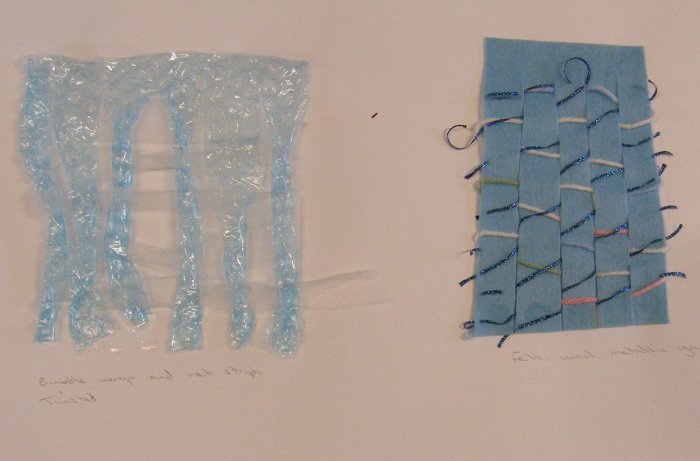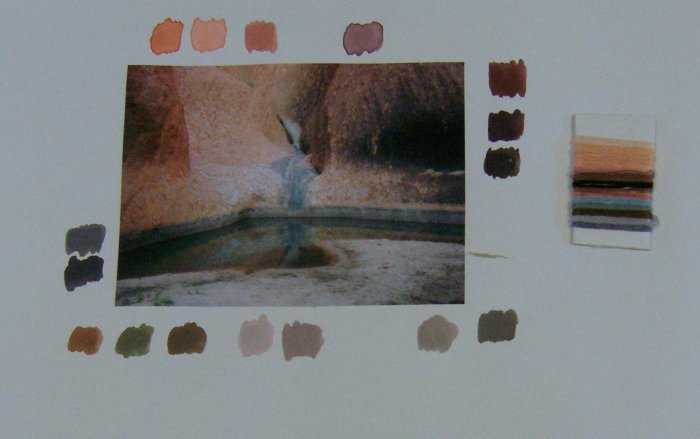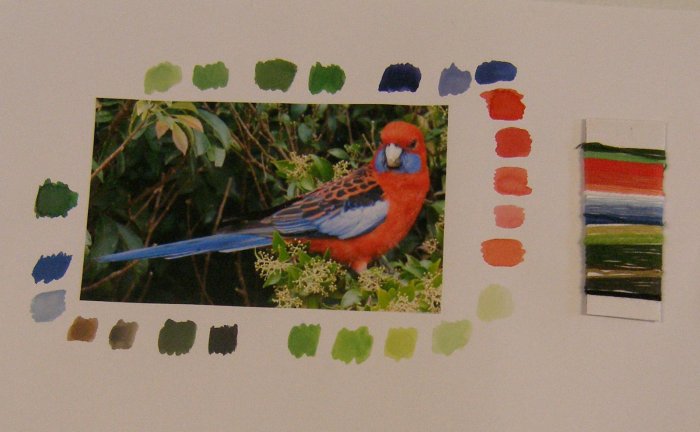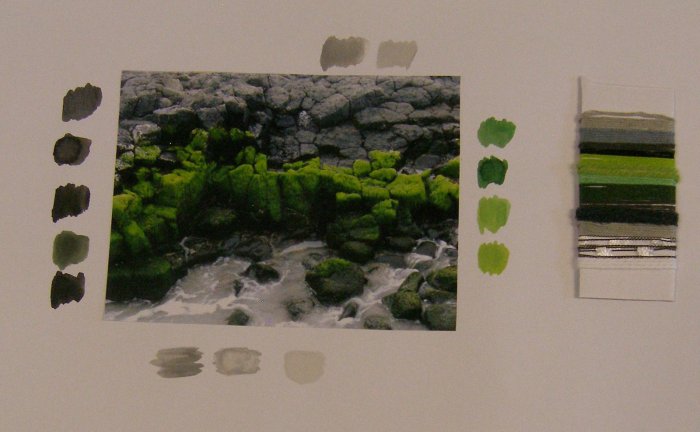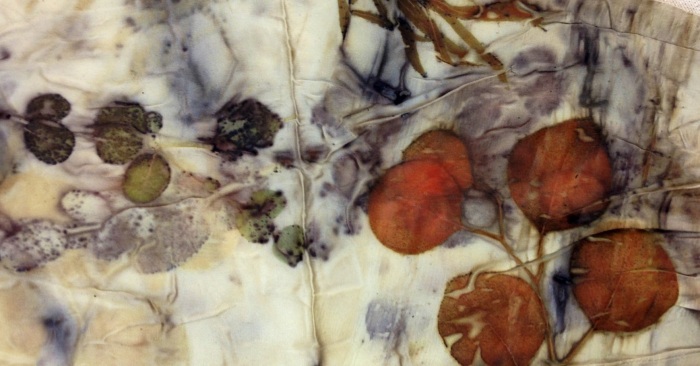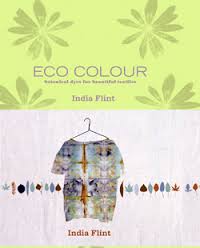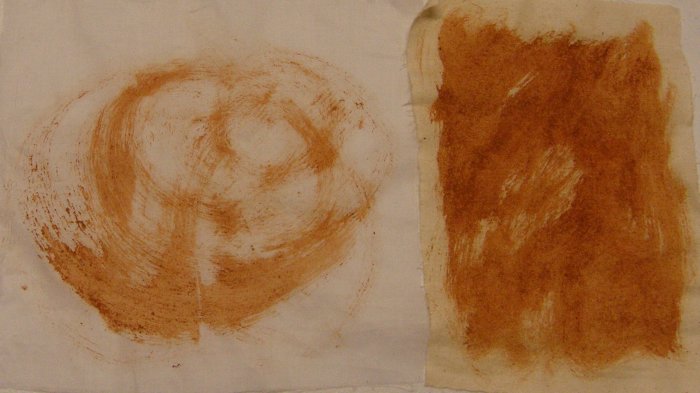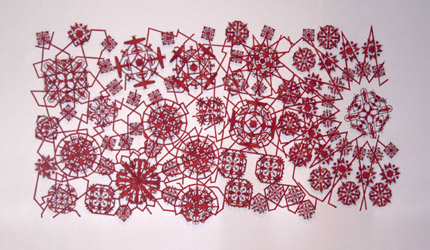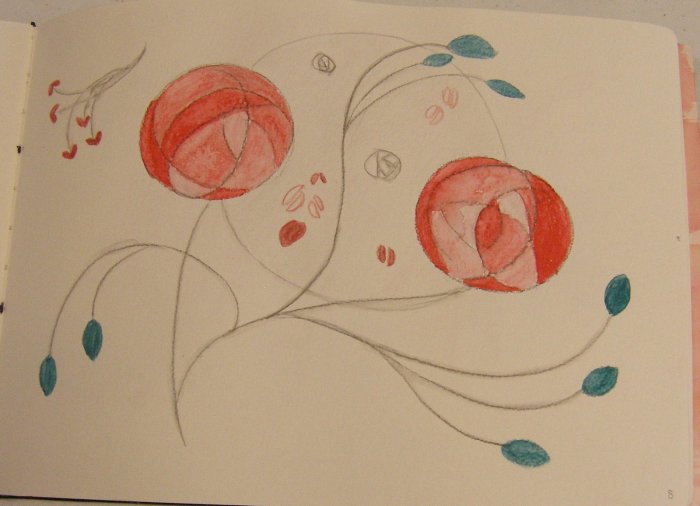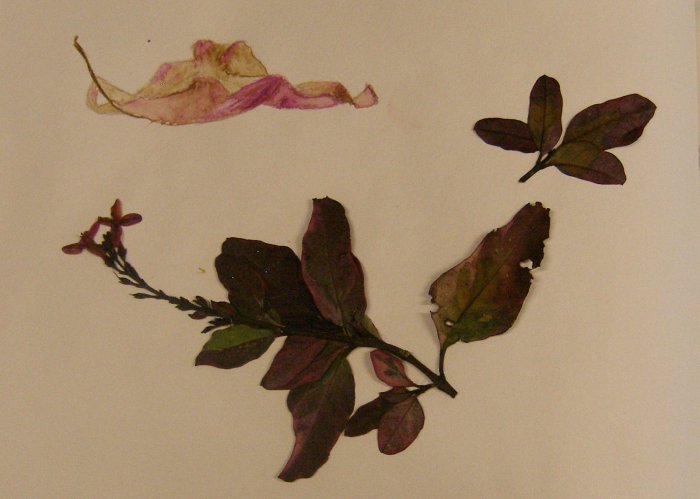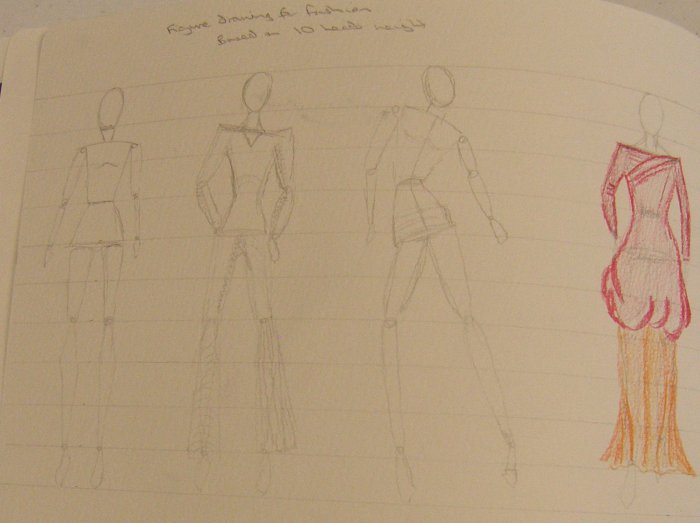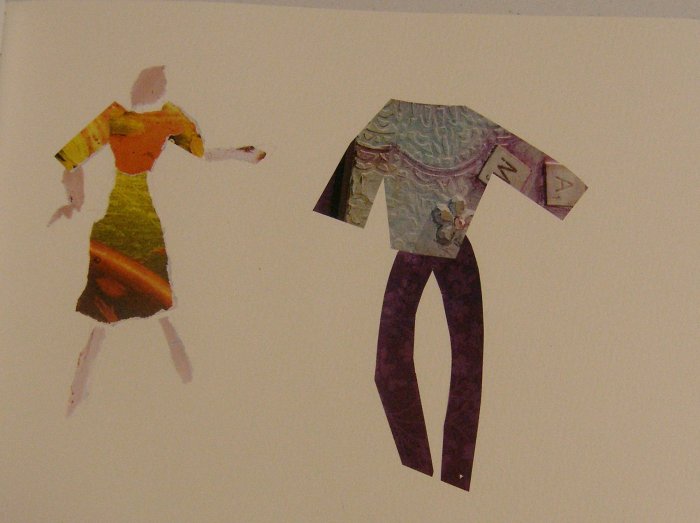The first part of this research point is to “write some notes in your learning log on how you think the work of the textile artist differs from that of the designer, the designer-maker or the craftsperson.”
Here is a quote from Saint Francis of Assisi (1181-1226):
“He who works with his hands is a laborer.
He who works with his hands and his head is a craftsman.
He who works with his hands and his head and his heart is an artist.”
This distinction between the levels of laborer, craftsman and artist may not be so appropriate with today’s definitions of textile artist, designer, designer-maker and craftsperson. Many home based hobbyists will describe themselves as craftspersons but will still throw themselves heart, body and soul into what they create.
Grayson Perry provides another way of discerning the divide between art and craft in his interview for the British Museum (Craft in the information age 2011) in which he says:
“The difference between craft and art I define as craft being something that can be taught, and art coming much more from the inspired individual. Many artists are extremely poor craftsmen, many crafts people are rubbish artists.
This seems to me to be a very appropriate and accurate description of the difference between an artist and a craftsperson. A textile artist however, is a combination of the two; a person who is an inspired individual, a creative person, and a skilled craftsperson at the same time, although it can also be argued that someone who labels themselves as an artist may not necessarily have good craft skills.
In The Textile book (Gale, C and Kaur, J), definitions of a Designer, Designer-Maker and Craftsperson are given as follows:
Designer – someone who develops ideas with a full understanding of the requirements of the textile manufacturer and the marketplace. Someone who designs items that will be made, usually in large quantity, by another company.
Designer-maker – someone who designs and produces one-off or small batch quantities. They tend to be focussed on design first and production second and are not overly concerned if their design is made by someone else.
Craftsperson – very similar to a Designer-maker but focused more on the process of making, with every step of the making process being important to them.
The term designer-maker appears frequently in internet searches and seems to have particular relevance to the production of one off and small production runs of unique furniture. Damon Lewis from Darwin in Australia has his website called www.designermaker.com.au and specialises in furniture and sculpture. In the UK www.designermakers.org.uk is a collection of designer-makers producing bespoke contemporary furniture by commission.
The role of a designer stands separate to the other three being discussed here. A pure designer does not make items themselves, they produce the ideas and designs for other people to create. With textile artists, designer-makers and craftsperson there are large areas of overlap and the boundaries are blurry, so people adopting these titles may choose one because they think it sounds better, or more upmarket, than another term rather than because it is more applicable to what they do. This is an issue picked up in The Textile Book where they discuss the trend for galleries and funding organisations to try to upscale and gain credibility for textiles in a fine arts setting by using the terms of artist or designer -maker instead of craftsperson which is viewed as being more downmarket.
The crossovers between designer-makers and craftspersons are perhaps the most apparent and it can be harder to describe what differentiates them. To the interested viewer or purchaser the difference may not be apparent but it is based around the method of production. The designer-maker may design a prototype themselves, then outsource the making of it. A cratsfperson is more likely to make all items themselves or, if they do outsource the making, that making will still be done by hand by other craftspeople whereas a designer-maker may outsource their idea to be made by machine even if their prototype was crafted by hand.
The second part of this research point is to investigate the work of two internationally known textile artists and I will do this in a separate log entry. Then there are more questions as follows:
How do you view textile art? Do you think about it in the same way that you would look at a painting or a piece of sculpture? How far do you feel it has been accepted as a medium for fine art by the fine art establishment?
The question of how I personally view and think about textile art in comparison to other art forms is fairly simple to answer. A painting, piece of sculpture or art work in another medium I will simply look at in terms of like and dislike. I will look at why I have that reaction – is it the colour, style, composition or maybe the subject matter that creates my like or dislike? With textile art I will have that instinctive like/dislike reaction and analysis of why but then I will look at how the piece has been made. I will look more closely at the materials that have been used, see if I can spot how it has been constructed and pick out ideas that I might be able to use myself. I want to take a piece of textile art apart or to see step by step photos of it being made so I can really understand the process behind it as well as see the finished item.
I enjoy the Lord of The Rings trilogy of films and have the extended versions of the DVDs. These include over 9 hours of behind the scenes footage showing how the films were created including the design process and insights into the workshops and costuming departments. This is fascinating to see both the level of detail that has gone into these films but also some of the ways in which props and sets were made and costumes were designed, materials chosen, materials dyed, over-dyed, printed, stitched, beaded and aged. It is that type of background information that I desire when I see a piece of textile art – the “making of” documentary.
The acceptance of textiles as fine art really depends on how fine art is defined. Like other definitions in the artistic field, there appears to be some discrepancies in what fine art actually is.
Universities that have arts degrees and fine arts degrees differentiate between the two by the amount of specialism, with an arts degree involving wider practice across a number of areas that could lead to careers in a range of different fields, and a fine arts degree focussing on one specialism and leading to professional practice in that specialism.
Clara Lieu, visual artist and an adjunct professor at the Rhode Island School of Design, says in an article in The Huffington Post about visual art versus fine art:
“A prevalent opinion is that all fine art is visual art, but that all visual art is not necessarily fine art. One common point of view is that the original motivation for making the artwork is what distinguishes visual art from fine art. Visual art encompasses everything that is visual, is extraordinarily wide in scope, and includes everything from a Monet oil painting to commercial concept sketches made for an animated movie. Many people see fine art as being generally devoted to artworks that are made purely for the sake of themselves.”
If we follow the premise in these views, then textiles acceptance as fine art depends on it being made by a professional artist specialising in a narrow field and made purely for arts sake rather than the fact of it being a textile work. In The Textile Book (Gale, C and Kaur, J) the authors say “The issue of textile art is not fundamentally about whether it is fine art, design or craft; it is about accessing fine arts’s industrial infrastructure, which is increasingly just a part of the media, leisure, tourism and interior decorative industries”.
A review of auction houses shows textile work being included in Fine Arts auctions. Sothebys include in their Fine Asian, Australian and European Art catalogue a Le Corbusier print in wool and cotton.
With the blurred definition of fine art and the broader usage of the term fine art, the acceptance of textiles as a medium for fine art is widespread.
Addition 24 August 2015
Last week I was in a waiting room browsing through magazines and I came across an article titled “‘D’ for design” in Vogue Living Jan/Feb 14 by Polly Dickens, the Creative Director for the homewares chain Habitat. The article expresses her views on the importance of good design and, fundamentally, what makes for good design in the first place. Polly Dickens hast he view that good design is really about attention to detail and the thoughtfulness that goes into making something.
She uses the term designer craftsmen to mean a designer who knows how to make a thing, the person who knows how a product is put together and could make it themselves, to differentiate from a designer who sits at a computer and produces a CAD image to be made in a factory. To quote “this is what makes something tactile yet functional, and at the same time satisfying. This is a word I constantly return tom because good design has to do with function, but also emotion; the two must be intrinsically linked, because if something works perfectly, it is as emotionally satisfying as it is functional, and this brings a great sense of peace to our daily lives”
Polly Dickens also places emphasis on the input that a manufacturer can have on a design, and this is an interesting viewpoint as it is one that was not addressed earlier in this research point. She gives the example of sending an idea, in this case a piece of watercolour art, to two different manufacturers and basically seeing what they came up with. Her example used a high-tech factory in Portugal and a little carpet weaver in India and from the same piece of art the two manufacturers produced a range of bedding and a rug.
This suggests a more collaborative process between the roles of designer and manufacturer and possibly a reiterative process where an idea is circulated between the parties with each adding input until the final product – or range of products – is decided upon. I wonder what would happen if a theme book was circulated between students and each added their input and then the resulting theme book was copied and each student produced their own interpretative work? Other collaborations spring to mind like a weaver working with a potter to cross pollinate ideas based on a single design. A collaborative project such as that involves a level of trust between the artists but could result in some very exciting work that takes each person in directions they have not ventured into before.
Sources:
Craft in the information age available from http://blog.britishmuseum.org/2011/09/15/craft-in-the-information-age/
Gale, C and Kaur J, 2002, The Textiles Book, Berg, Oxford
https://claralieu.wordpress.com/2013/04/06/ask-the-art-professor-whats-the-difference-between-fine-arts-and-visual-arts/
http://www.sothebysaustralia.com.au/list/AU0786/289

